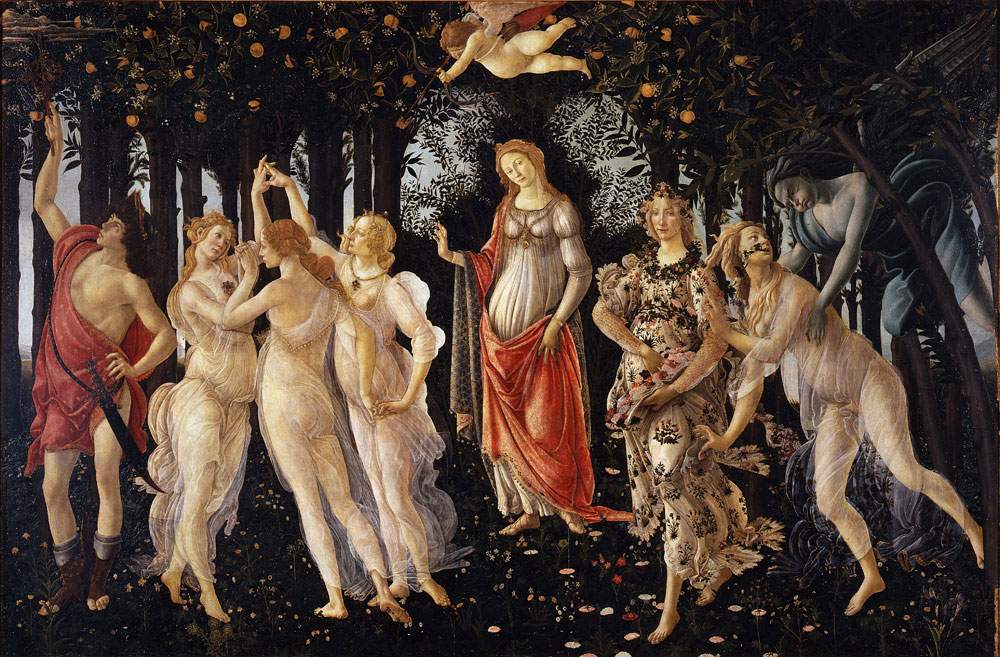Only on January 24, 25 and 26, 2022 comes to the Botticelli and Florence cinemas in an exclusive premiere. The Birth of Beauty, the docufilm, with narration by Jasmine Trinca, produced by Sky, Ballandi and Nexo Digital under the patronage of the City of Florence, conceived and written by Francesca Priori and directed by Marco Pianigiani.
Protagonists will be the history, art and contemporary rediscovery of Alessandro Filipepi, better known as Sandro Botticelli (Florence circa 1445 - 1510). From Terry Gilliam to Andy Warhol, from David LaChapelle to Jeff Koons and Lady Gaga: contemporary painters, stylists, and photographers have in fact been fascinated by the artist and his works, reinterpreted and reinvented to the point of entering fully into the collective imagination, the same one that brings thousands of visitors every year in front of his masterpieces. Yet for more than three hundred years after his death, the Florentine painter was almost completely forgotten, until the rediscovery of him by Ruskin and the Pre-Raphaelites in the 19th century.
In the docu-film dreamlike re-enactments, evocative images of the city and footage of extraordinary works alternate with the voices of leading international experts, scholars, and art historians who narrate the Florence of Lorenzo de’ Medici, discovering one of the symbolic artists of the Italian Renaissance.
From the Madonnas to the paintings of the perpetrators of the Pazzi Conspiracy executed and hanged outside the Porta della Dogana at the Palazzo Vecchio, from Dante’s Inferno to the Pietà, from the ancient gods of Hellenic mythology to Savonarola’s apocalyptic God, Botticelli’s art will be investigated through the interventions of experts: Alessandro Cecchi, director of the Casa Buonarroti Museum in Florence; Ana Debenedetti, curator of the drawings and paintings section at the Victoria & Albert Museum in London; Franco Cardini, professor of Medieval History at the University of Florence; Jonathan Nelson, professor of history ofart at Syracuse University in Florence; Marco Ciatti, director of the Opificio delle pietre dure in Florence; Kate Bryan, art historian; Chiara Cappelletto, associate professor of aesthetics at the Department of Philosophy, University of Milan; and Edward Buchanan, creative director of Sansovino 6.
Botticelli’s spirit is especially encapsulated in two of his masterpieces: the Primavera (1478-82) and the Birth of Venus (1483-85). Grace and harmony sprout in Primavera, as much as the hundreds of different flowers represented by the master: forget-me-nots, iris, cornflower, buttercup, poppy, daisy, violet, jasmine. Ethereal and perfect, the Garden of Spring is a synthesis of the neo-Platonic philosophy in vogue at the court of the Magnifico. With the Renaissance, the time has indeed come for the return of the ancient gods: Botticelli gave new life to myths, thus creating his most famous and enigmatic works known today as “Botticellian mythologies.” With Pallas and the Centaur (c. 1482) and Venus and Mars (c. 1483), the painter brings the divinities of ancient Greece into the heart of 15th-century Florence, in the constant and feverish search for a model of beauty that goes beyond the representation of reality, beyond the academy. The Birth of Venus (1483-85) is an emblem and concrete realization of his aspiration. Long-linear figures, soft and harmonious curves: the faces of Botticelli’s Venuses are mirrored in those of his Madonnas and vice versa.
In 1492, the death of Lorenzo the Magnificent marked the end of a golden age. Girolamo Savonarola’s apocalyptic sermons inflame the Florentine crowds. They burn the bonfires of vanities that sacrifice the symbols of the age, including works of art. It is a matter of little time before Florentines’ tastes adjust to the Dominican friar’s precepts. Patrons changed and Botticelli himself adapted by producing other masterpieces such as the Mystical Nativity (1501) and the Lamentation over the Dead Christ (1495-1500), letting sinuosity and softness of form give way to broken lines and violent color contrasts.
After an oblivion of more than three centuries, its rediscovery in the nineteenth century will come thanks to the Pre-Raphaelites: the poet and painter Dante Gabriel Rossetti will buy the Portrait of Smeralda Bandinelli (1472) for a few pounds, drawing inspiration from it for some of his most fascinating works. This is just the beginning of a genuine Botticelli-mania, which has continued from the 19th century until today involving photography, fashion, and entertainment.
Great Art at the Movies is an original and exclusive project of Nexo Digital. For 2022, La Grande Arte al Cinema is exclusively distributed in Italy by Nexo Digital with media partners Radio Capital, Sky Arte, MYmovies.it and in collaboration with Abbonamento Musei.
 |
| Coming to theaters the docu-film dedicated to Botticelli and his masterpieces |
Warning: the translation into English of the original Italian article was created using automatic tools. We undertake to review all articles, but we do not guarantee the total absence of inaccuracies in the translation due to the program. You can find the original by clicking on the ITA button. If you find any mistake,please contact us.